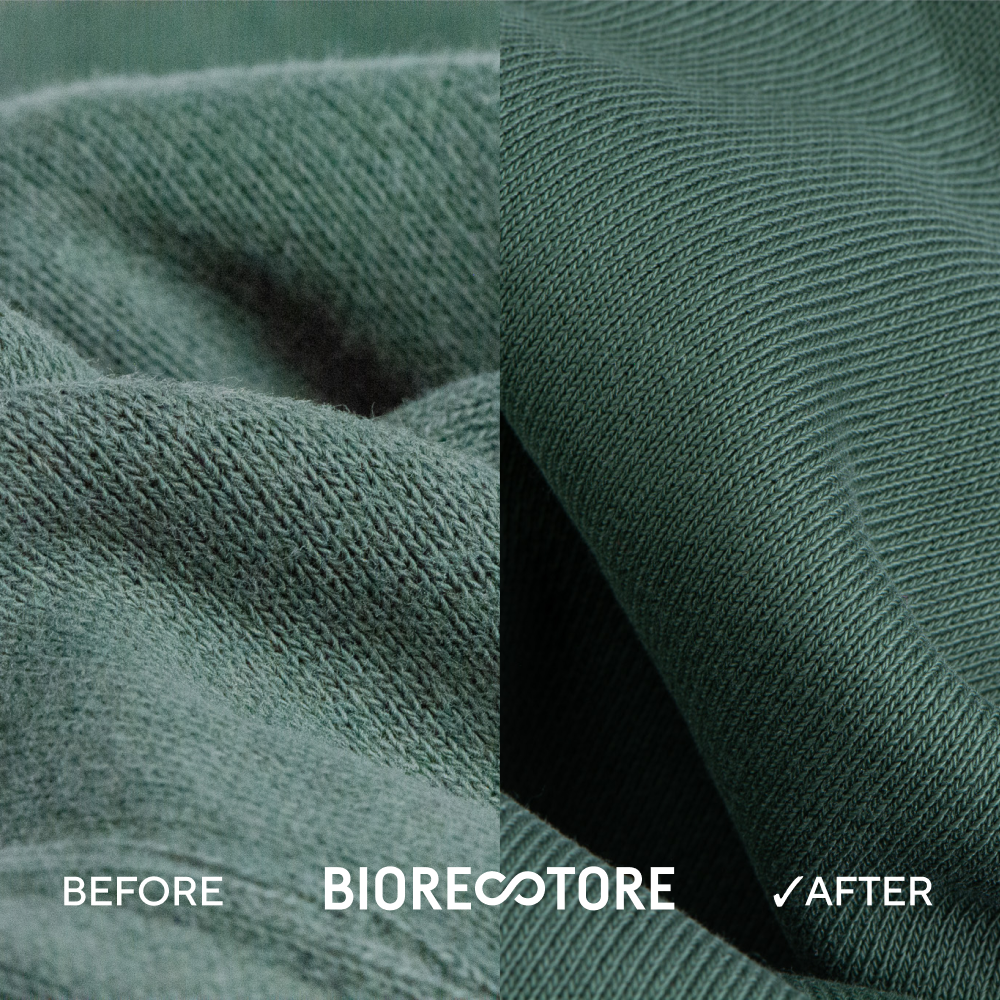We get it! Nothing ruins a good outfit faster than lint or what you may know as fuzz (or even fuzzies). Seeing your favourite pieces of clothing turn into a slobby mess of fibres only after a couple of washes can be disappointing for anyone.
Luckily, you can combat this laundry care challenge with some simple tips and tricks to keep your wardrobe looking and feeling its best for longer. In this article, we will share the best lint remover techniques along with expert recommendations turning your ordinary laundry day into a fabric care saga.
Let’s get started!
1: Sort properly
Sorting your laundry may seem like a trivial matter, but it directly impacts the longevity and appearance of your wardrobe. For instance, some fabrics are “lint shedders”, while others are “lint magnets” by nature. When you wash, dry, or even store these garments together, a lint covered disaster is inevitable.
Cotton, terry cloth, and rugs are typically known as “lint shedders”. These garments transfer fuzz, debris, and loose or broken fibres to other textiles in the washing or drying cycle. On the other hand, linen, synthetics, knitwear, and corduroy are “lint magnets”. This is why you need to be extra careful while washing these garments. Even an odd bit of fuzz is more than enough to ruin your once oh so beloved linens.
Just by keeping these items separate, you can significantly reduce the amount of lint accumulated on your clothing. But that’s not it! The good old sorting by colour rule still applies because light coloured lint will stick out on dark clothing and vice versa. As the wise man once said, prevention is certainly better than cure!
2: Clean your laundry machine regularly
If there is excessive lint stuck to the sides or bottom of your washing machine already, just imagine, where will it eventually end up? Just by keeping your filter clean and clear of lint, you can stop the fluff from floating around in your washer.
3: Turn your Clothing Inside Out
Everyone is bound to have a favourite sweater knitted by grandma that is, unfortunately covered in lint or fuzz due to friction from washing and wearing processes. No matter what lint remover you use, these fabrics come out of the washer looking dirtier than how they went it- all thanks to lint or fuzz.
In that case, try washing the items inside out. Simple enough, right? This way, you can maintain the appearance of your wardrobe for years to come as the fuzz will not be clinging to the visible side of your clothing.
PRO TIP: If the fabric is made of at least 70% cotton, you can also use BIORESTORE lint remover powder in the laundry machine to get rid of lint and pilling in only one home laundry wash.
4: Don’t overload your washing machine
Overloading your washing machine is a classic mistake that anyone can make, especially when in a hurry. Overloading can not only damage your clothing (and even the laundry machine itself), but it also leads to excessive lint and fabric pilling, making your fabrics look dull and worn-out.
Plus, it will take longer for your clothes to get clean when the drum is filled to its brim, and they may still come out looking and feeling dirty. For the best laundry care, it’s essential to check out the capacity and dimensions of your laundry machine.
5: Use Lint Remover for Laundry Care
BIORESTORE cotton lint remover is one of the best solutions to keep your wardrobe lint-free for longer. Simply pick your cotton clothes with lint or pilling on them and toss them in the washing machine.
According to the instructions mentioned on the packaging, add the recommended amount of BIORESTORE cotton directly in the washer. Once done, run the cycle at 40ºC for 2 hours. Finish the process by giving your garments a quick spin in the tumble-drier or rinse them with a small amount of your regular detergent and lay them flat to dry.
6: Use the right laundry products
Starting with the detergent (or laundry powder), make sure that you are using the right laundry products for your wardrobe. That means something that’s effective yet treats your fabrics gently.
PRO TIP: Look for labels like “non-toxic”, “ecofriendly”, “sustainable”, “sulphate free”, “phosphate free”, “gentle”, “mild”, “no bleach” etc. when shopping for detergents. Avoiding traditional or heavy-duty powders can help you avoid excessive friction and keep your clothes feeling like new for longer.
7: Don’t go overboard with the detergent
Its essential to use just the right amount of detergent for every laundry load. By adding excessive detergent, your clothing will not come out cleaner from the cycle. In fact, it will lead to extra residue and buildup on your textiles, making them prone to lint, fuzz, and bobbles.
The label on every bottle or box of detergent will tell you the optimal amount of product to be used per load. Be sure to read these instructions carefully (especially if you have just switched your laundry powder) before adding the detergent to your washing machine.
The same goes for other laundry care products like fabric softeners, and bleaches etc. as well. Even using too many lint removers may not be the best choice for maintaining your fabrics.
8: Use Cold Water for Washing
As compared to hot water, cold water washing is a much gentler option that doesn’t cause extra wear and tear to your clothes. Whenever possible, use cold water for washing for maximum protection against lint and fabric pilling.
While warm water can be used for laundering most items like everyday clothing, underwear, and moderately soiled fabrics etc., unless you want to shrink everything in your closet, it’s best to steer clear of using hot or boiling water in laundry.









